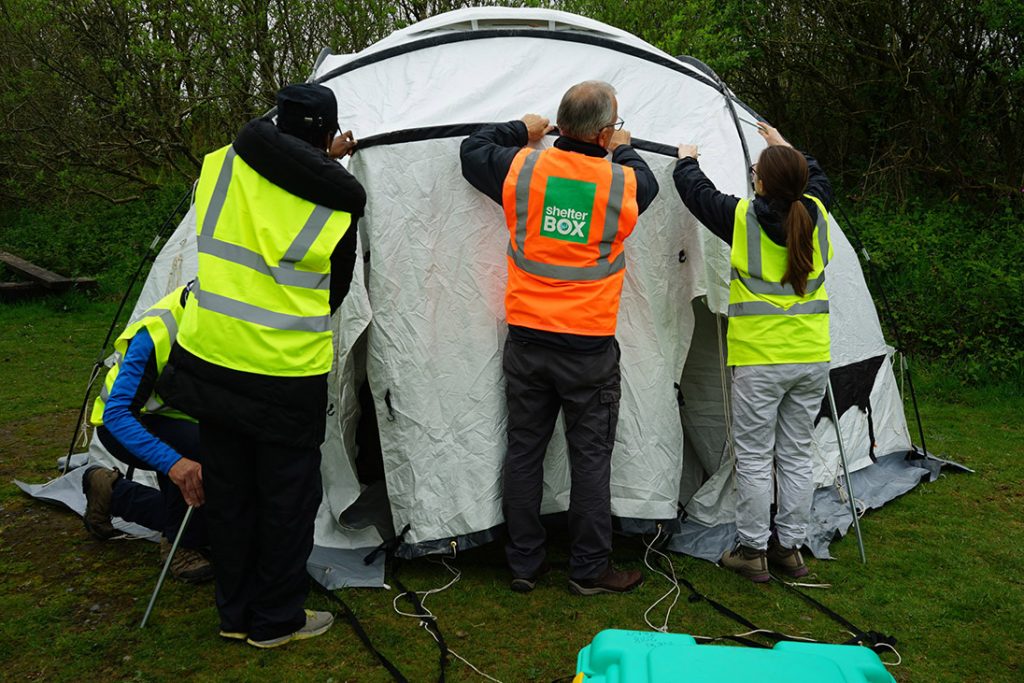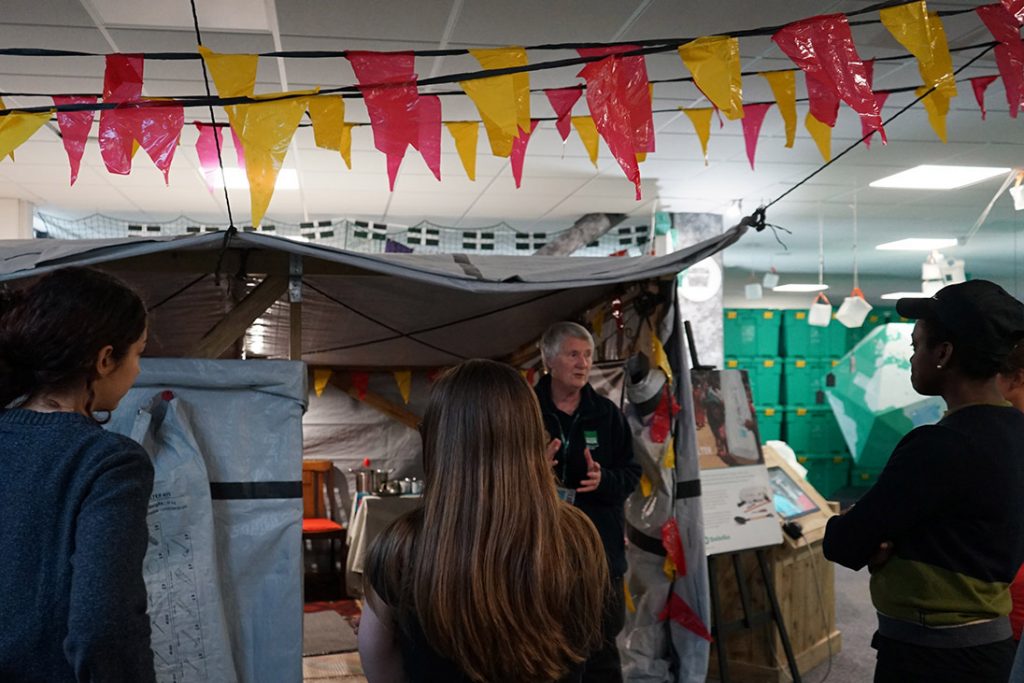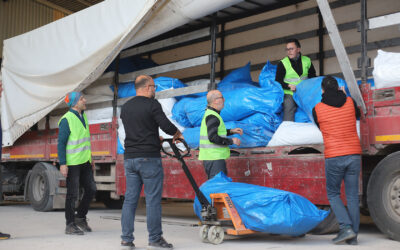ShelterBox delivers boxes of aid in disaster zones, right? That’s what I used to think. Since I got involved in Rotaract in 2014, I’ve heard various people sing the praises of ShelterBox, as it is a popular charity for clubs to fundraise for.
However, it was not until I was invited to attend the “Understanding ShelterBox Operations” (USOps) course in 2019 that I really started to appreciate what a truly remarkable organisation ShelterBox is.
It’s about supporting people with the tools they need to recover. And getting shelter can be the start of so much more – it can bring families back together, be a place to share meals and restart studies or work.
The course was genuinely eye-opening and has inspired me to be more vocal about the amazing work ShelterBox does. It’s not just about delivering boxes—in fact, that doesn’t even come close to describing their work.”
So, thus began my journey. On a mild Sunday evening in late April, I boarded an overnight train at London Paddington, which arrived bright and early the next morning in Truro, the home of ShelterBox HQ.
Shortly after arriving, the course commenced with an activity where I got to know a bit about the other participants. Our group included a mix of ShelterBox staff and volunteers, including a Rotarian who represents ShelterBox in his district and a member of the international team of volunteers who travelled all the way from Switzerland to attend.
After a tour of the headquarters and my first authentic Cornish pasty, we headed off to the training ground. Immediately, we were tasked with setting up ShelterBox tents, which would be our home for the next two nights.


When disaster strikes, families need shelter. Here, volunteers learn how to set up a tent correctly.
Over the next 48 hours, we participated in a variety of team building activities, situational tasks and classroom learning about how ShelterBox responds when a disaster strikes.
While I have given my word not to disclose our specific activities, I can say that at one point during the course, I encountered a cow who mooed at me quite aggressively when I entered her field.
But on a serious note, the course was genuinely eye-opening and has inspired me to be more vocal about the amazing work ShelterBox does. It’s not just about delivering boxes—in fact, that doesn’t even come close to describing their work.
For a Response Team volunteer who arrives in a country which has been hit by disaster, there are a myriad of challenges to overcome. These can be physical barriers (maybe a flood washed out the road you were planning to travel on), language barriers (help, I need a bilingual Rotarian who can translate!), or even administrative issues (if the long hours don’t knock you out, the paperwork might).
Due to all these challenges, ShelterBox Response Teams (or SRTs) need to be adaptable, able to improvise, and ready for any situation. It’s not a one-size-fits-all setup.
I was impressed to hear how local Rotary and Rotaract clubs have played such crucial parts in the success of previous ShelterBox responses.”
Response Teams put families first, working with them to understand what aid items will help them to get back on their feet – whether that’s a ShelterKit to repair their house, a tent to call home, or water filters to keep them safe when supplies are contaminated.
The amount of planning and patience that goes into a successful community assessment and distribution means SRTs also need to be empathetic, great negotiators and diplomats, logisticians and skilled communicators, whilst always being ambassadors for the charity.
Although I never actually left Cornwall during the training course, I feel I got a tiny taste of what it’s like to go on a deployment. And while I hadn’t expected the course to be as immersive and situational as it was, I thoroughly enjoyed it.
By the end of it, I had started to appreciate what it takes to work in a team that is under pressure and working on tight deadlines, without all of the luxuries of home (including a good night’s sleep).
What’s more, I learned about myself, and how I respond when put in those situations. There were also a lot of relevant lessons that came from the activities on the course which are applicable to everyday life, and I would say anyone who seeks to develop their leadership skills would learn and grow during the USOps course.
On the final evening, our group listened to ShelterBox Response Team Volunteers share some of their experiences. I was impressed to hear how local Rotary and Rotaract clubs have played such crucial parts in the success of previous ShelterBox responses.
For me, that really underscored how the partnership that ShelterBox and Rotary share enables effective team work, problem solving and ultimately a real global impact.
There are many ways that the global Rotary family supports ShelterBox—and that means that together we can shelter more families after disaster. Rotaractors and Rotarians can talk to their networks of friends, family and colleagues about ShelterBox’s work and their partnership with Rotary.
We can raise funds and awareness in our own communities, volunteer, create global connections, and for those clubs in disaster-affected areas, we can work locally with ShelterBox response teams – all vital aspects of the success of our partnership.


Carla and the team were given a tour of the ShelterBox HQ, based in Truro.
If you or your club are excited by the idea of learning more or getting involved, I would strongly urge you to get in touch.
Visit the partnership Action Toolkit or email the team.










